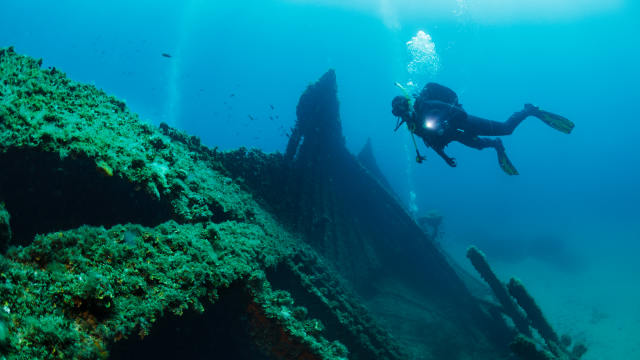
Amazing discoveries can be made in maritime archaeology. Divers on a recent excavation expedition off the coast of England discovered some unsettling artefacts.
Amazing discoveries can be made in maritime archaeology. Divers on a recent excavation expedition off the coast of England discovered some unsettling artefacts.
The stones are engraved with Christian crosses, a common emblem in the thirteenth century, and are composed of Purbeck marble, indicating that they were cut close by. They weigh about 154 pounds and 440 pounds, respectively, and range in size from 1.5 to 2 meters. The group surmises that the slabs were intended to serve as crypt monuments or coffin lids for prominent church members.
“The grave slabs we have here were a very popular monument for bishops and archbishops across all the cathedrals and monasteries in England at the time,” Bournemouth maritime archaeologist Tom Cousins, who oversaw the recovery, said in a statement. “The wreck went down in the height of the Purbeck stone industry.” Westminster Abbey, Canterbury Cathedral, and Salisbury Cathedral are a few examples.
The discoveries will help experts understand more about southern England’s way of life in the thirteenth century, particularly with regard to stonemasonry.
There has always been disagreement over the relative amounts of work completed in London and Purbeck Marble, despite the fact that the stone was quarried close to Corfe Castle in Dorset. Although they had not yet been polished to their customary glossy sheen when they sank, we can still learn more now that we are certain they were carving them here, according to Cousins.
There is currently no evidence of any paranormal activity connected to the burial markers.
